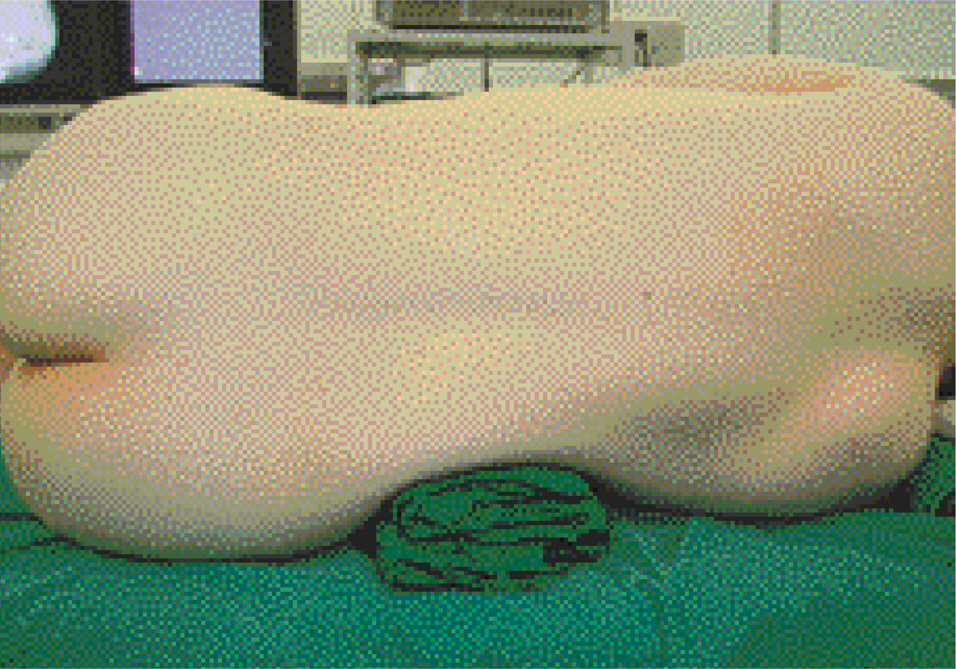J Korean Soc Spine Surg.
2003 Mar;10(1):25-29. 10.4184/jkss.2003.10.1.25.
Intraoperative Straight Leg Raising Test During Arthroscopic Microdiscectomy
- Affiliations
-
- 1Department of Orthopedic Surgery, Chungnam National University, Daejon, Korea. jsahn@cnuh.co.kr
- KMID: 2209701
- DOI: http://doi.org/10.4184/jkss.2003.10.1.25
Abstract
- STUDY DESIGN: A prospective study.
PURPOSE: To assess the effectiveness of the straight leg raising test during an arthroscopic microdiscectomy.
MATERIALS AND METHODS
52 patients, 38 men and 14 women, took part in this experiment. The mean followed up and age were 21, ranging from 13 to 41 months, and 26.4, ranging from 13 to 42 years old. There were 19, 28 and 9 cases between the 3rd- 4th lumbar vertebrae, between the 4-5th lumbar vertebrae between the 5th lumbar vertebra and the 1st sacral vertebra, respectively. 41 patients were able to perform the SLRT (straight leg raising test) procedure, and were called group I, and 11 patients could not perform the test, and were classed as group II. In order to perform the intraoperative SLRT, a lateral decubitus position was adopted. After the disc removal, the SLRT was carried out. When the test result gave an angle of 70 degrees or greater, the surgery was carried out on a pertinent domain. The success of the surgery was graded by the JOA score.
RESULTS
In group I, after removal of the disc, the first 31 patients were checked over a 4 week period to assess their recoveries. A year after the surgery, their follow up results were better than Good. In 9 patients, there were little improvements from the first SLRT, so they were re-tested after a 2nd discectomy, which resulted in improvements., with better than good results. 1 patient, whose test result was fair after four weeks and one year, was diagnosed with spinal stenosis, so underwent an operation. In group II, the SLRT during surgery was untestable, due to overweight and uncooperative patients. The results in 3 patients were fair, and in another 8 they better than good. Overall, 97.6% of the patients in group I showed a rapid recovery, but in the group II, only 72.2% showed a rapid recovery.
CONCLUSION
From the short term follow up, the use of a SLRT during surgery is very effective. Further research is required to give more precise results.
Keyword
MeSH Terms
Figure
Reference
-
1). Casey KF., Chang MK., O'Brein ED., Yuan HA., McCullen GM., Schaffer J., Kambin P. Arthroscopic microdiscectomy: comparison of preoperative and post -operative imaging studies. Arthroscopy. 13:438–445. 1997.2). Hermantin FU., Peters T., Quartararo L., Kambin P. A prospective, randomized study comparing the results of open discectomy with those of video-assisted arthroscopic microdiscectomy. J Bone joint surg. 82-A:958–65. 1999.
Article3). Jonsson B., Stromqvist B. Significance of a persistent positive straight leg raising test after lumbar disc surgery. J Neurosurg. 91:50–53. 1999.4). Kambin P. Arthroscopic microdiscectomy. Arthroscopy. 8:287–295. 1995.
Article5). Kambin P. The role of minimal invasive surgery in spinal disorder. In Stauffer RN(ed). Advances in operative orthopaedics. 3:147–171. 1996.6). Kambin P. Posterolateral percutaneous lumbar interbody fusion. Arthroscopic microdiscectomy. Minimal intervention in spinal surgery. 117–121. 1991.7). Kambin P. Arthroscopic lumbar interbody fusion. Spine care. 1056–1066. 1995.8). Kambin P., Casey K., O'Brien E., Zhou L. Trans -foraminal arthroscopic decompression of lateral recess stenosis. J Neurosurg. 84:462–467. 1996.9). Kambin P., Schreiber A., Shepperd J., Leu H., Scaf-fer J. Minimal intervention surgical techniques. Orthop Trans. 17:1132. 1993.10). Kambin P., Zhou L. Arthroscopic discectomy of the lumbar spine. Clin orthop. 337:49–57. 1997.
Article11). Kim EH., Seon CW., Cho DY. A clinical outcome of automated percutaneous lumbar discectomy(more than 4 years follow up). J Kor orthop assoc,. 33(3):819–825. 1998.12). Chung JY. Arthroscopic lumbar discectomy. J Kor spine surg,. 7(2):303–306. 2000.13). Leu HJ., Schreiber A. Percutaneous fusion of the lumbar spine: A promising technique. Spine. 6:593–604. 1992.14). Smith SA., Massie JB., Chesnut R., Garfin SR. Straight leg raising. Anatomical effects on the spinal nerve root without and with fusion. Spine,. 18(8):992–999. 1993.
- Full Text Links
- Actions
-
Cited
- CITED
-
- Close
- Share
- Similar articles
-
- The Effect of Straight Leg Raising on F-wave Parameters in Healthy Subjects and Patients with Lumbosacral Radiculopathy
- Hemodynamic effect of full flexion of the hips and knees in the supine position: a comparison with straight leg raising
- Comparative Study of Microdiscectomy and Automated Percutaneous Discectomy in Lumbar Disc Herniation
- A Clinical Study of Chemonucleolysis for Herniated Lumbar Discs
- High Lumbar Disc Herniations



